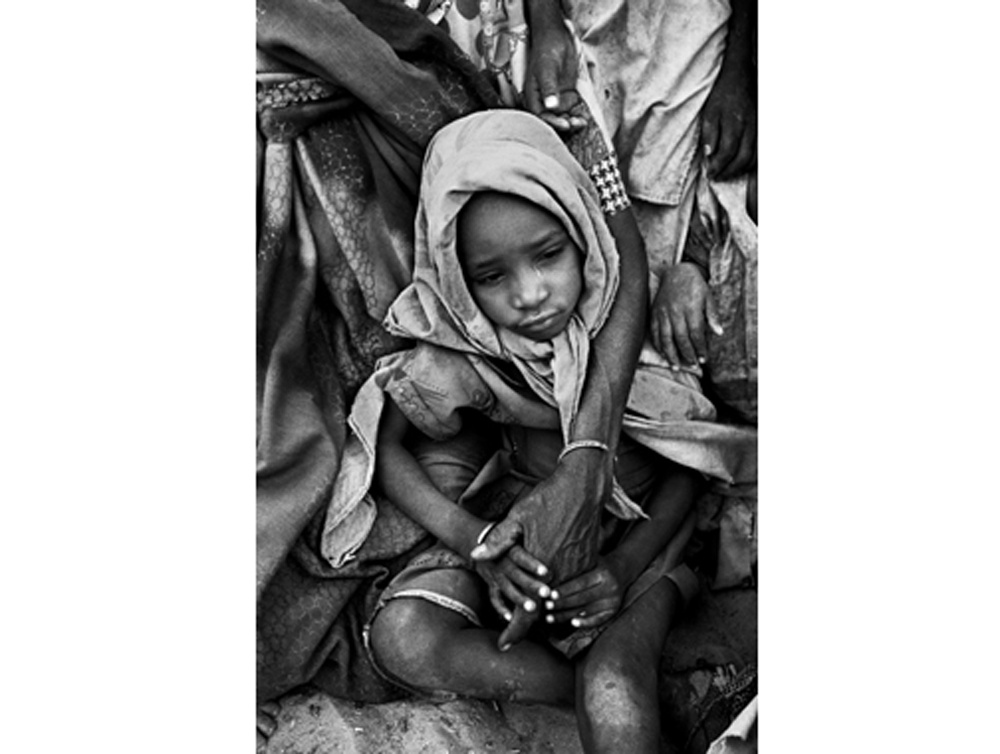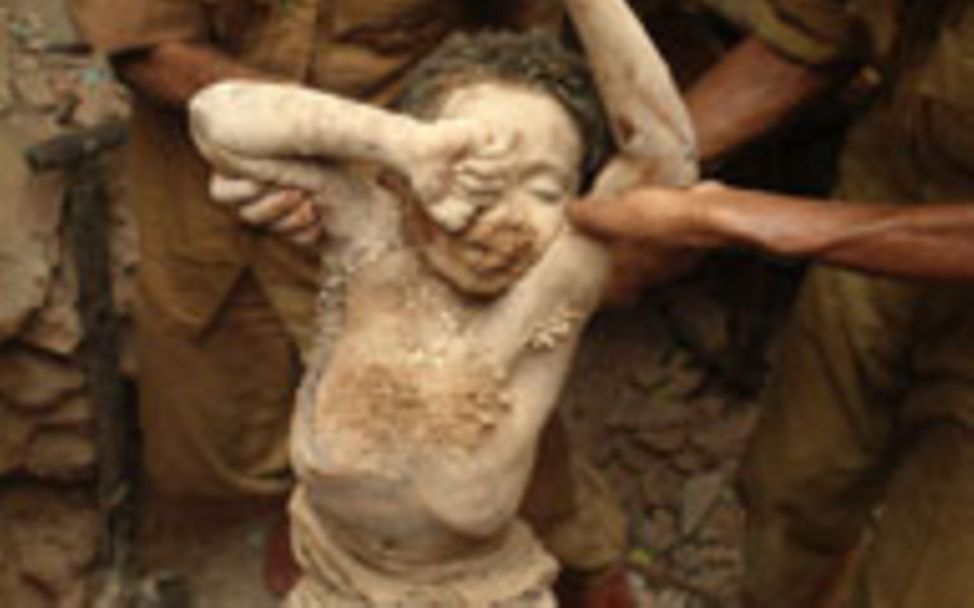UNICEF Photo of the Year 2004
Each year, UNICEF Germany grants the “UNICEF Photo of the Year Award” to photos and photo series that best depict the personality and living conditions of children worldwide in an outstanding manner. Here are the winners 2004.
Marcus Blaesdale
Darfur in flame

“The UNICEF photo of the Year 2004 is giving a “face” to the biggest refugee tragedy worldwide: It is the face of a child”, Germany’s First Lady and UNICEF patroness Eva Luise Köhler said at the presentation in Berlin.
Exhausted, desperate: A child waits with her mother in Disa, in the Northern Sudanese province of Darfour.
Displaced by recent conflicts her village has been burned down. It is estimated that there are 800.000 displaced people in Darfour who are trapped on the East, West and South by government troops and in the North by the desert wasteland, which will certainly claim the lives of weaker family members and of their livestock. UN consider the situation in Da r fur the worst humanitarian crisis in the world today. The Khartoum Government is responsible for systematic killings in the region. More than 200 ,000 people escaped across the bo r der to Chad.
The British photographer Marcus Bleasdale travelled to the Darfour-area in June 2004.
2nd Prize for Abir Abdullah, "Collapse of a rotten building in Bangladesh"

Rescue workers recover the dead body of a six-year-old child from the rubble of a 100-year old building that collapsed at midnight of June, 9 2004. More than a hundred people lived in this six-storey-high building at Shankharibazar, Dhaka. Nineteen people died and many more were injured in this accident.
Photographer Abir Abdullah is constantly travelling to document daily news in Bangladesh. In a long-term project he works on the situation of children during floods in Bangladesh, a phenomenon that sets a large part of his country under water every year. In 2004 nearly 600 people in Bangladesh were drowned, more than 25 Million were affected by the floods.
3rd Prize for Alfredo D’ amato, "Corinna’s home on a garbage dump in Bucharest"

Five-year-old Corina experienced problems with walking development, as a result of her enforced winter confinement together with her four brothers and sister. Grandmother Eliana is their sole guardian; their father is in jail, their mother has long since disappeared. Eliana’s biggest fear is that the police will come and demolish their home, as part of their annual spring ‘clean-up’ campaigns.
In Calea Vacaresti, South East of the Rumanian capital of Bucharest, four families have made their homes in the dried out basin of an artificial lake, constructing shacks from bricks, plastic and cartons in which to live. Unregistered at birth, the poorest people of Romania are not even citizens in their own country.
When the weather permits, they dig for scraps of iron, copper and aluminium in order to sell them to local car wreckers, but the advent of winter renders the frozen earth impenetrable. With sheets of plastic serving as windows, the temperature inside the shacks is no different to that outside, maybe 20 or 25 degrees celsius below. Anything and everything is burnt in a bid for warmth
Honorable Mentions

